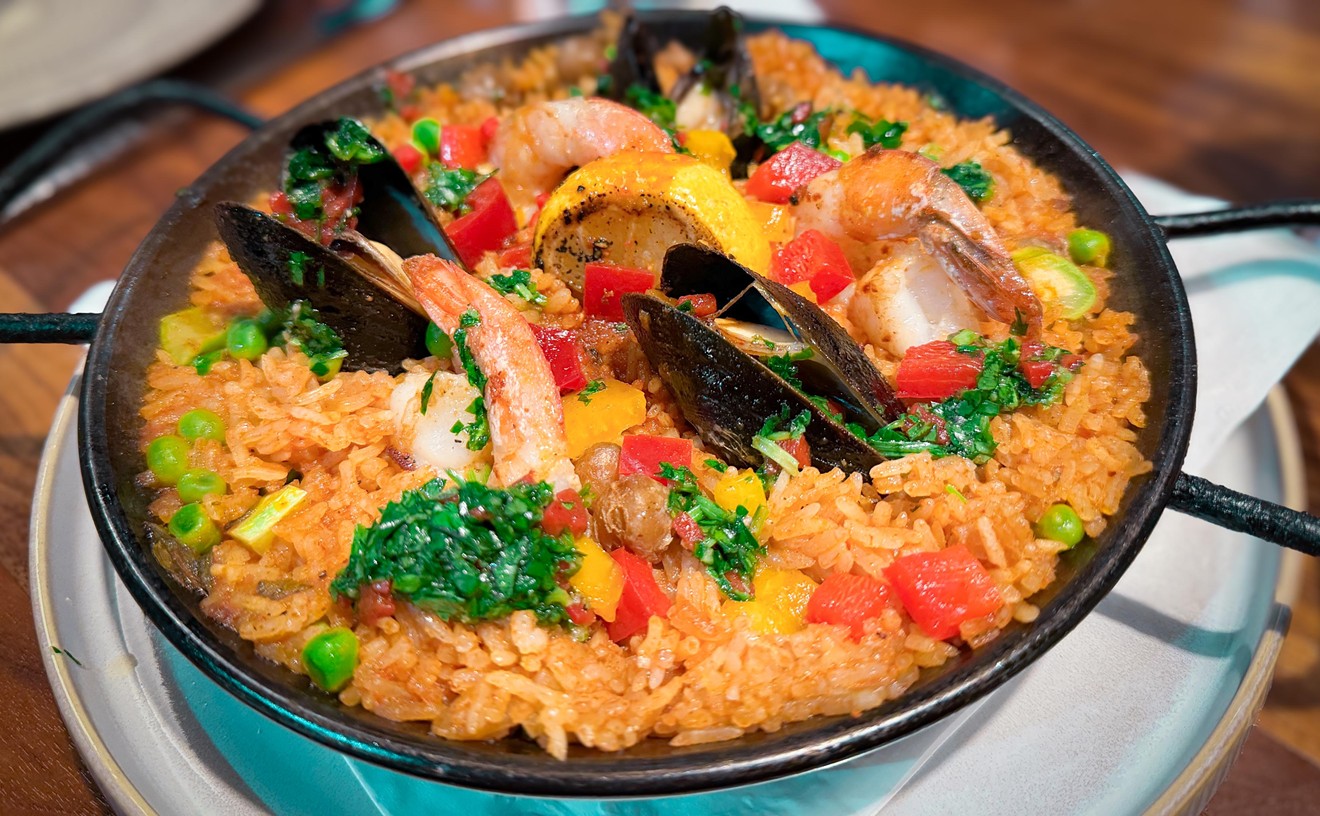You still see a flaming shot every once in awhile. For the most part, however, bars wisely consider the close proximity of of fire and alcohol to be a generally bad idea.
Why? An Australian bar owner related a story about the time some riotous types ordered a round of B-52s and excitedly slammed glasses to the bar before drinking. The resulting fiery spray ignited bar napkins and a few nearby patrons. Local bartenders generally speak of incinerated eyebrows or other such minor disasters.
Even cooking with flame and spirits can be hazardous. Mark Cassel, chef at Park, tells me about the time he apprenticed at the Dallas Country Club. "It was the first time I had to flambee anything," he says. "I got the pan too hot and it erupted." Kitchen staff are not unfamiliar with fire, of course. But in those days, line cooks at the club wore polyester neckerchiefs...
"It was very dangerous," the chef points out.
Which reminds me: don't ever try lighting your favorite (or any) liquor at home, in someone else's home or--as we did--in your editor's office (tends to make him a bit upset if he arrives at work earlier than expected to find dedicated journalists involved in a serious experiment...that accidentally chars a stack of personnel reports).
Now, I have always been told that liquors burn at 100 proof (50
percent alcohol) or higher. In fact, some sources claim fires only
start around the 57 percent range. There are even stories from the past
seeming to confirm this. Tavern owners in the 1700 and 1800s would set
a match to samples of whiskey brought in by dealers. If they lit, it
was "proof" of the alcohol content. If not, they considered the barrel
to be watered down or otherwise inferior. However, the B-52 flares when
bartenders touch a lighter to orange liqueur. Same when French
restaurants torch crepe suzette: it's Grand Marnier (40 percent) that
bursts into flame. And one of Cassel's recipes at a previous restaurant
required him to reduce then ignite port wine.
Here's what we found:
Grand
Marnier indeed lights up quickly. The flame is low and steady, burning
blue to yellow--and is easily extinguished. Other 40 percent spirits
also ignite, though with less force. When poured onto a plate and lit,
for instance, vodka (at room temperature) carries a small blue plume
over about half its surface area. Same with tequila (100 percent agave
reposado), although the flame is almost invisible. Both are rather unstable,
the slightest movement or breath being enough to douse them. Yet even a
liqueur rated at 38 percent burned momentarily.
Higher proof samples ignite instantly--and they resist attempts to extinguish the
resulting blaze. For example, Chartreuse (55 percent) literally erupts, the burst from a tablespoon of the bitter liqueur drizzled on a plate
reaches five or six inches in height. When I lit this next to a sink,
my quick but clumsy effort to move the fiery plate under the faucet
caused flickering liquid to splash around the drain...where it
continued to burn.
Not a real good idea, but it could be worse. Scott Melton, bar manager
at Park, says he tried a party trick involving a line of burning shots
and a spray of Everclear--one time, and at a previous gig. "It's like
napalm," he says. It flared so dramatically the ceiling scorched. "I almost got fired, no pun intended."
But the old stories are wrong. It's not just the 100 proof stuff that burns.
Given the danger and the unpredictability of this, it is best not to order a flaming shot in bars--even when they promote the gimmick--and not to make them at home ever. It's also a good idea to move bottles away from the heat when cooking.










